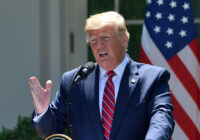This is part three of my series on why free market economics is a false religion. Be sure to check out part one and part two, and stay tuned for the rest.
Free market capitalism is a false religion. In my last article, I described how this false religion has its own moral philosophy and priestly class. But a religion needs more than mystery and theology. What a religion needs, more than anything, is followers.
Doomsday cults rarely attract broad membership. By the same token, those 19th-century religious cults that banned sex petered out because there was no one to carry on their beliefs in the next generation. In Twilight of the Money Gods, John Rapley writes, “Without believers, religions have no force. The same goes for schools of economics. Their strength comes from winning enough followers to shape the policy agenda of a society and remake it in its own image.” Strength in numbers. The story of the rise of free market capitalism as a world religion is one of growing influence. Like any religion, this one spread by making converts and winning adherents.
Unlike hard sciences such as physics or biology, economics is cyclical. Scientific progress is made when new data forces course corrections. As new discoveries come to light, scientists adjust and incorporate them into the knowledge base. free market Economics does not work like that. Rapley notes, “A given doctrine can rise, fall and then later rise again … much as happens with preachers who gather a congregation, a school rises by building a following — among both politicians and the wider public.”
Laissez-faire economics, for example, had been the gold standard for decades leading up to the Great Depression. This economic philosophy of little or no government intervention in the economy combined with tax cuts would be very recognizable today, because it was the Platonic ideal that the neoclassical and neoliberal economists wanted to return to.
Ultra-wealthy banker Andrew Mellon was in charge of maintaining this dogma throughout the Roaring Twenties. This hands-off approach was seen as part of the reason for the incredible rise of the American stock market during that period, which inspired one congressman to hail Mellon as “the greatest Secretary of the Treasury since Alexander Hamilton.” But Mellon was completely unequipped to deal with a crisis like the Great Depression. After the stock market collapsed in 1929, with unemployment surging past 20%, Mellon still didn’t think the government should lift a finger to help anyone. His answer, according to Herbert Hoover’s memoir, was to “liquidate labor, liquidate stocks, liquidate the farmers, liquidate real estate. Purge the rottenness out of the system. High costs of living and high living will come down … enterprising people will pick up the wrecks from less competent people.” By “enterprising people,” Mellon clearly meant the rich. Letting everybody die so the rich can come in and pick our bones clean is pretty much the preferred answer proposed by laissez-faire and modern neoliberalism.
Keynes gives new life to capitalism
Enter John Maynard Keynes. Lord Keynes was a wealthy British aristocrat who studied at Eton and Cambridge. Keynes ran with a highfalutin clique called the “Bloomsbury Set” that included Virginia Woolf and E. M. Forster. Keynes was also the economist who saved capitalism after the Great Depression. Though Milton Friedman gets a lot of the glory as the 20th century’s most important economist, in reality, capitalism might not have survived without Keynes.
As economic collapse threatened to crush the entire capitalist system, it was Keynes who rescued capitalism from destruction. John Rapley likens Keynes to St. Paul, who helped create the New Testament in Christianity. Keynes created a new paradigm for capitalism. During a time when the Bolshevik Revolution was still a recent memory, it was Keynes who took capitalism in a bold new direction to save it from oblivion. Keynes realized that laissez-faire’s hands-off approach — simply liquidating everything — wasn’t a solution. He knew that if capitalism was going to survive, it would be necessary to take action.
The way he saw it was this: During times of crisis, a capitalist economy’s biggest problem was lack of demand. As people lost their jobs, nobody had any money to spend, so factories and shops sat empty. Keynes proposed that the government should be the spender of last resort. The way he saw it, budget deficits during a recession or depression could be a good thing, since the alternative was society’s total immolation. As the only institution capable of printing money in a crisis, it was the government’s job to “prime the pump” by blasting cash into the economy so people could spend it and bring demand back. During the Depression, governments had their backs against the wall and the pitchforks were out. Politicians were desperate to try anything, so they glommed onto Keynes’s ideas to get through the worst of it. And… it worked!
Keynesian policies were adopted first in the United States and Britain. It was these policies that inspired the Works Progress Administration and other hugely popular New Deal programs to help get the US through the darkest days of the Great Depression. It was military Keynesianism that finally delivered the knockout punch to the Depression in World War II (this vestige of Keynesianism lives on even today, seemingly untouchable despite the free market’s dominance everywhere else in the halls of US power). By the 1970s, Keynesian-style economics dominated pretty much every capitalist nation. It was during this period that Richard Nixon ruined Milton Friedman’s day by admitting, “We are all Keynesians now.” This postwar time period was also known as the Golden Age of Capitalism. But things were about to change.
The resurgence of laissez-faire
Even at the absolute zenith of its influence, Keynesian economics never achieved the global dominance of free market economics. Why is that? Because during the heyday of Keynesianism, there was a competing economic faith that was not part of the capitalist system.
At that point, the world was still separated into First World, Second World and Third World. The Second World was made up of the Soviet Union, communist China and smaller satellite nations like Cuba. These countries didn’t have anything to do with Keynesianism, because at its heart Keynesianism was still capitalism. Keynesian policies left the basic premise of the capitalist economy — who owns the factories and gets to make all the decisions about the profits — untouched.
At its heart, Keynesianism was just a body cast designed to protect capitalism (giving it time to heal) and keep it from drying up and blowing away during the Great Depression. Lord Keynes wanted to preserve the capitalist system and he did. The rich were more than happy to put up with government intervention in the economy, regulations and unions (Keynesian policies) in order to defend against encroaching Marxism.
And here we return to the cyclical nature of the free market religion. When the postwar boom times finally started to lose momentum in the late 1960s and early 70s, neoclassical and neoliberal economists saw their chance. With the war in Vietnam and the first oil crises, inflation and stagflation, people started to question the Keynesian faith. This was Milton Friedman’s golden opportunity.
Milton Friedman and Fredrich Hayek called themselves “neoliberals” who studied “neoclassical” economics. This is because they were harkening back to older schools of thought, discredited since the Great Depression. Friedman wanted to distinguish himself from the mushy, civil rights-loving liberals of his day by referring back to early liberal philosophers like Locke and Montesquieu. The “neo” liberals saw themselves as the new version of that.
The neoliberal, neoclassical resurgence was a reaction to the Keynesian philosophy that had become orthodoxy by the 1960s. One could foresee that at a certain point, Keynesian economic prescriptions would fail to provide the same oomph they once had. It was here that Milton Friedman’s patience paid off. He just needed to wait for the right crisis to dust off his ideas and put them into practice. As it turned out, he was in the right place at the right time. Two happy accidents of history allowed this particular brand of economics to become a global phenomenon, unlike any world religion that came before.
Friedman won influential adherents like Ronald Reagan and Margaret Thatcher. Reagan had this joke that the nine most terrifying words in the English language were “I’m from the government and I’m here to help.” He and Friedman believed that the government should never interfere in the economy, that the government was always the problem. To them, freeing the market of all regulations and restrictions would bring peace and prosperity.
As discussed earlier, public benefit was never really the goal. Unleashing the market did cause stocks to surge, creating a massive upward distribution of wealth. In the same way that Keynesian policies won widespread influence in capitalist nations, Friedman’s brand of neoliberalism started in the US and UK and spread out from there. But the real quantum leap that separated Keynesian economics from free market capitalism happened when the Second World suddenly evaporated. With the fall of the Iron Curtain, neoliberal policies — widely known as the “Washington consensus” — were quickly adopted in former communist states as they dumped their old economic model for go-go free market capitalism.
John Rapley makes an interesting comparison. Christian Millenarians believe that the time of Christ’s return is close at hand. They believe that spreading the Good Word is important because once all of humanity has been converted to their beliefs, the Second Coming will finally happen. Rapley points out that while Christian missionaries were never quite able to convert everyone, “here, suddenly, was another doctrine, which, under their noses, was getting ever closer to pulling off a very similar feat. Neoliberalism had become the state religion across most of the planet, and the holdouts were diminishing by the year.”
Next time, we’ll take a closer look at how economics bridged the gap from being considered “moral philosophy” to dismal science. It didn’t happen overnight.
[Anton Schauble edited this piece.]
[Let’s Make Them Pay first published this piece.]
The views expressed in this article are the author’s own and do not necessarily reflect Fair Observer’s editorial policy.
Support Fair Observer
We rely on your support for our independence, diversity and quality.
For more than 10 years, Fair Observer has been free, fair and independent. No billionaire owns us, no advertisers control us. We are a reader-supported nonprofit. Unlike many other publications, we keep our content free for readers regardless of where they live or whether they can afford to pay. We have no paywalls and no ads.
In the post-truth era of fake news, echo chambers and filter bubbles, we publish a plurality of perspectives from around the world. Anyone can publish with us, but everyone goes through a rigorous editorial process. So, you get fact-checked, well-reasoned content instead of noise.
We publish 2,500+ voices from 90+ countries. We also conduct education and training programs
on subjects ranging from digital media and journalism to writing and critical thinking. This
doesn’t come cheap. Servers, editors, trainers and web developers cost
money.
Please consider supporting us on a regular basis as a recurring donor or a
sustaining member.
Will you support FO’s journalism?
We rely on your support for our independence, diversity and quality.










Comment